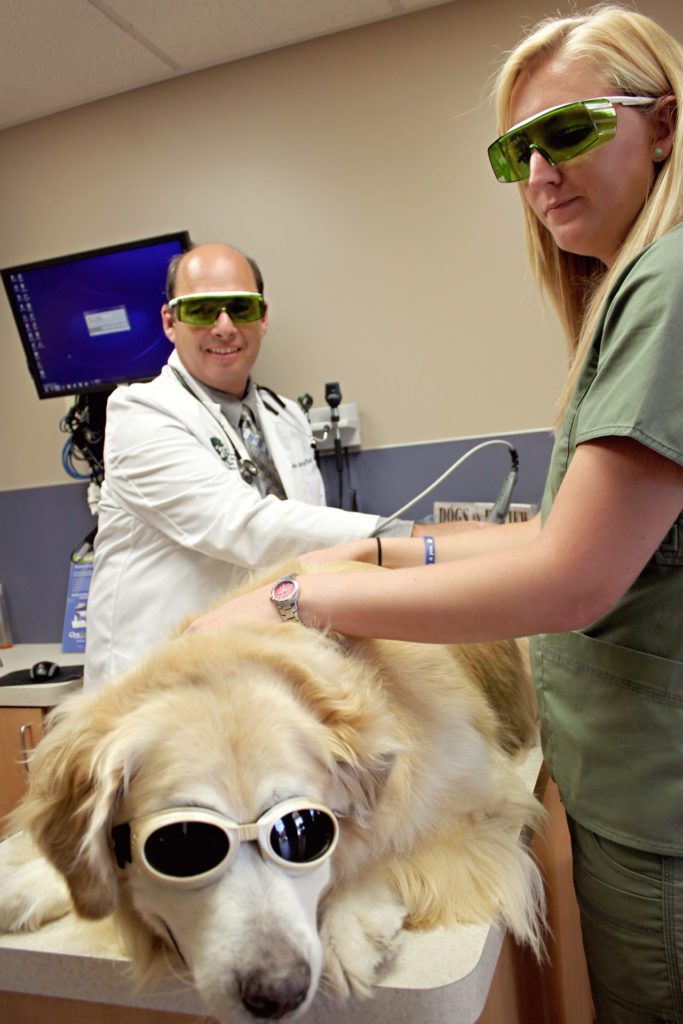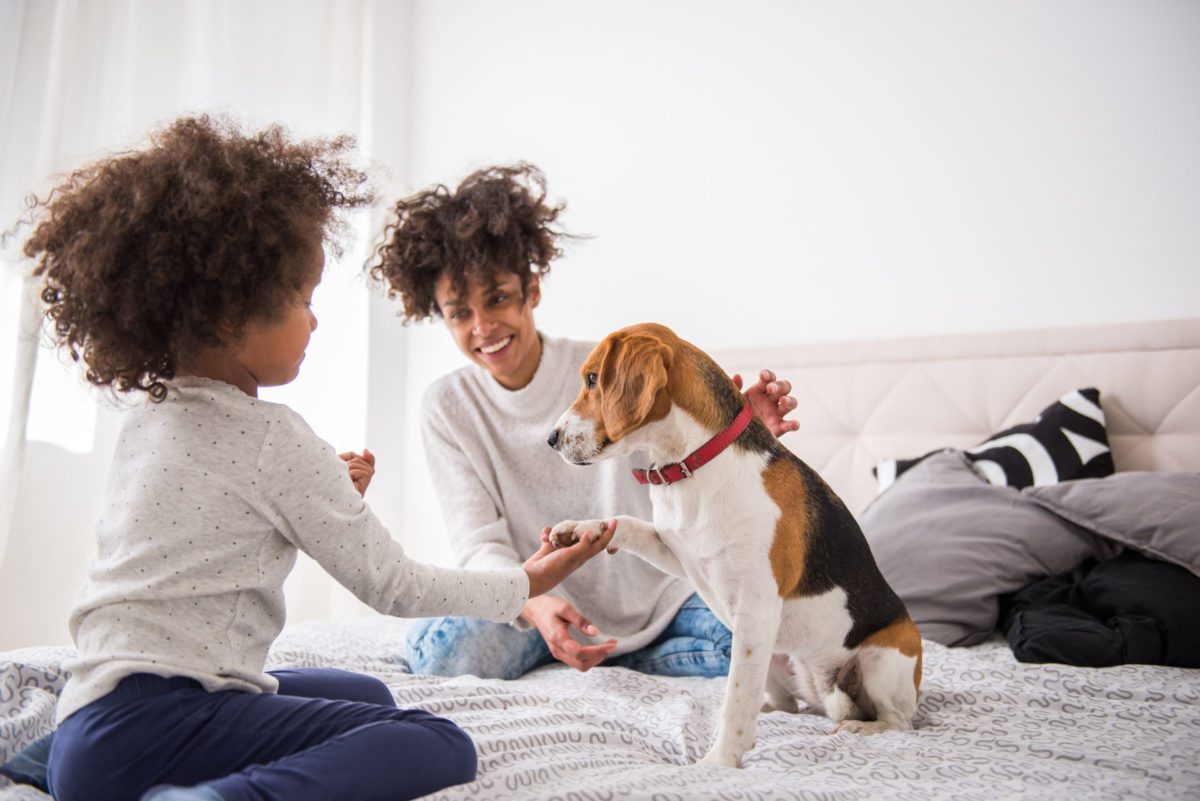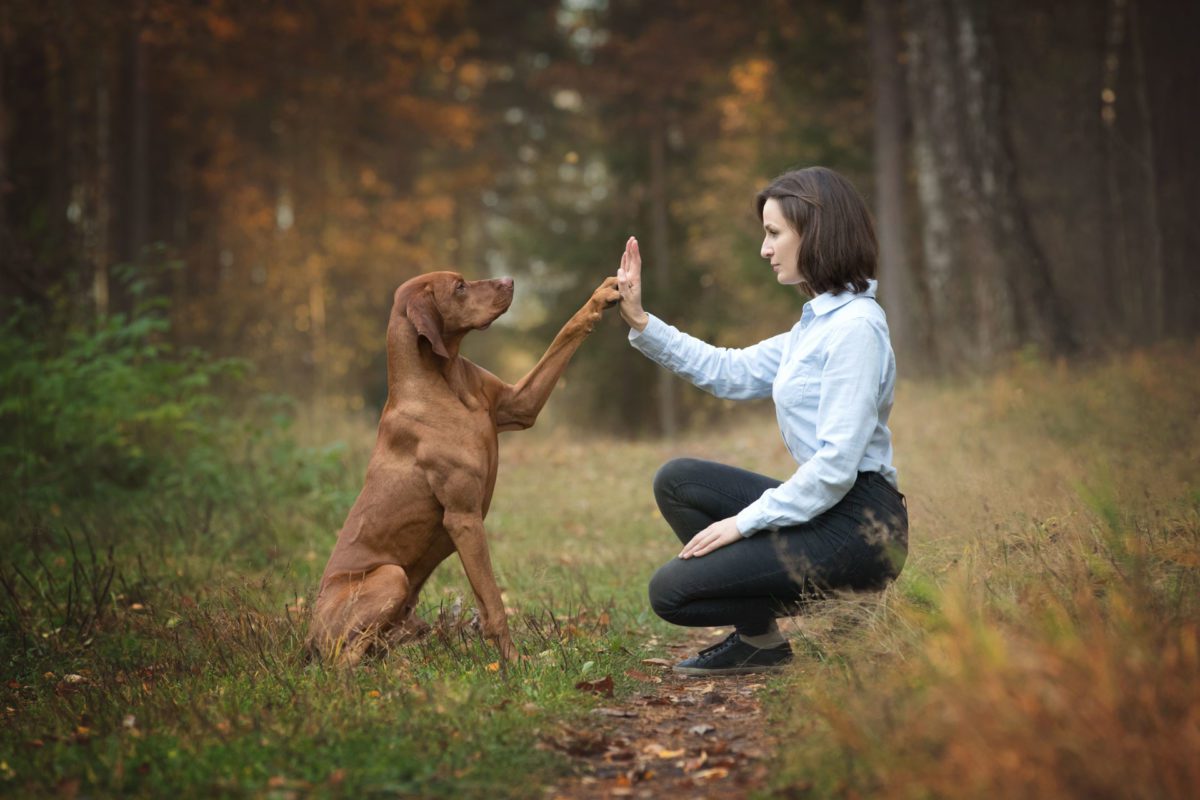Doggy Dentistry
While we know the requirements for human oral hygiene, rules for dogs and cats are less clear. Todd Yeagley, DVM, with Woodland West Animal Hospital in Tulsa, has some answers and tips.
“If you take on brushing [your animal’s teeth] yourself, it helps if you start early, when they’re young,” he says. “If you do it, use dog-specific or cat-specific toothpaste, as it’s different than for humans. The gold standard is to brush their teeth every day because plaque builds up. But even with a staff of 60 here, I don’t know anyone who does it.
“Instead, we focus on sedation dentistry as the most realistic way to provide your pet with oral hygiene, along with dental treats that are coated with an enzyme to break down the tartar. Look for products approved by the VOHC – the Veterinary Oral Health Counsel – as these have demonstrated some efficacy of the product in dental hygiene. There are also water additives [to improve dental health] for dogs. But nothing will take the place of yearly dental cleanings, just like us, to maintain oral health. Everything is supplemental to the yearly visit.”
Warnings signs for dental care issues are bad breath and visible tartar – but animals may not indicate that something’s wrong, says Yeagley.
“Dogs and cats will still eat when they have an abscess or periodontal disease, so that’s why it’s so important to get them checked yearly by a veterinarian in case there are issues,” he says.

Photo courtesy Woodland West
Heed the Signs
Furry, four-legged friends can’t verbally tell their owners they’re not feeling well. WebMD offers some warning signs to look for if you suspect your animal might be sick:
- Changes in eating habits
- Elimination changes
- Skin and coat changes or itchy skin
- Energy changes
- Coughing
- Stiffness or difficult rising

Keeping Kiddos Safe
Sherrie Hodgson, DVM, of OKC’s Neel Veterinary Hospital, says that there are proper protocols to follow with animals being around small children and newborns.
“If your pet has a history of aggression with children, do not ever allow it to be close to your baby or child unless you can guarantee a positive outcome for both,” she says. “There are some behavior modifications you can work on, which includes behavior changes for both the owner and the pet.”
A responsible adult should always directly supervise children when pets are around them, says Hodgson.
“Never assume the interactions will be positive. Many behaviors of small children mimic those of prey animals, which can trigger a dog’s prey drive, so do not allow dogs to chase children or bark at them when they are playing. If this occurs, move the dog to an area where it cannot see the children. Your dog should be trained to respond to basic commands, including ‘settle.’”
When it comes to babies, prepare your pet for a newborn’s presence with time to spare.

“It is best to help the pet adjust to a new baby by starting a few months ahead of the anticipated arrival; change the pet’s schedule to what you expect after baby comes, including pet feeding times, decreasing the amount of time you spend with the pet, and starting to use baby gates to keep the pet out of certain areas of the home,” she says. “Bringing baby products and furniture into the home ahead of time will help the pet get used to some of the smells associated with baby. If your pet is exhibiting concerning behaviors after baby arrives, contact your veterinarian or a trainer that uses positive reinforcement to discuss a plan.”

Animal Commitment
Caring for a pet can be a great learning activity for children, as they become responsible for the animal they asked to become their ‘furever’ friend. But how can parents go about teaching these lessons in an intentional way?
“I have children age 11 to newborn so this question is on my mind,” says Yeagley. “It’s common for people to get pets for their kids, and the parents need to demonstrate the care of the animals. Once they see the kid can do it, the child can help out with the chores. After a while, give them parts of that care to do on their own, see that they can do it and then increase the responsibility.
“Please don’t just give them the pet and say it’s their job. Instead, give them guidance and demonstrate it. It’s going to be more empowering; they need to see it done so they can figure out how to do it and take an interest in it. If their parents aren’t interested, will they be?”

Taming Behaviors
When a dog is aggressive toward other animals, it shouldn’t yet be socializing at a dog park or be walking on a leash with other pets around, says Hodgson.
“This behavior is very difficult to modify, but with the combination of a veterinarian with an interest in behavior, and a trainer who uses positive reinforcement, it is possible to lessen the dog’s response to triggers,” she says. “Never trust an aggressive dog with other pets or with children, even if it is ‘fine’ with the children in your family; it may not extend that courtesy to your children’s friends. Most dog bites and attacks are preventable, but only if the owner is wiser than the dog. When walking your dog, it should be leashed at all times. Use a six or eight foot long leash rather than a retractable leash, which offers you very little control over an unexpected situation.”
























